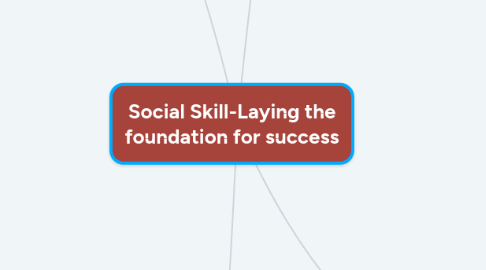
1. Prevent inappropriate behaviors
1.1. Cause-effect of problem behaviors
1.1.1. Attack attention
1.1.2. Negative role model
1.1.3. Create situation
1.1.3.1. Hurt
1.1.3.2. Not safe
1.2. Ways to aviod
1.2.1. Plan for transition
1.2.1.1. Showing signal before end
1.2.1.2. Sing or chant
1.2.1.3. Set a timer
1.2.1.4. More free play
1.2.2. Offer choices
1.2.2.1. Making choices
1.2.2.1.1. Limited
1.2.2.1.2. Safe
1.2.2.1.3. Appropriate
1.2.2.2. Promote
1.2.2.2.1. Responsibility
1.2.2.2.2. Group setting
2. Teach social skills
2.1. Promote peer learning
2.1.1. Learning by observing others
2.1.2. Grouping children in activities
2.1.3. Examples
2.1.3.1. Children with difficulty
2.1.3.1.1. Seat her between two socially peer
2.1.3.2. Encourage children with strong social skill
2.2. Tell social stories
2.2.1. Processes
2.2.1.1. 1. Set target skill
2.2.1.2. 2. Create a story
2.2.1.3. 3. Read story
2.2.1.4. 4. Role playing
2.2.1.5. 5. Reminds children to use skill
2.2.2. Assist a young disable child
2.2.3. Five-to-seven sentence format
2.3. Explore story books
2.3.1. Developmental bibliotherapy
2.3.1.1. Address issues
2.3.2. Children's literature
2.3.2.1. Options
2.3.2.1.1. Behaviors
2.3.2.1.2. Feelings
2.3.2.2. Children perspective
2.3.3. Picture books
2.3.3.1. Interesting
2.3.3.2. Appropriate
3. Meaning
3.1. Behaviors
3.1.1. Promote positive interaction
3.1.1.1. Showing
3.1.1.1.1. Communicating with others
3.1.1.1.2. Empathy
3.1.1.1.3. Participation
3.1.1.1.4. Helpfulness
3.1.1.1.5. Negotiation
3.1.1.1.6. Problem solving
4. Methods
4.1. Arrange the environment to promote positive social skill
4.1.1. Areas
4.1.1.1. Large
4.1.1.1.1. A space to play
4.1.1.2. Small
4.1.1.2.1. For interaction
4.1.2. Toys
4.1.2.1. Promote creative play
4.1.2.2. Always available
4.1.3. Learning materials
4.1.3.1. Encourage cooperative play
4.1.3.1.1. Pretend cars
4.1.3.1.2. Blocks
4.1.3.1.3. Imaginary foos
4.1.4. Less competition
4.2. Enhance social functioning through play
4.2.1. Building blocks
4.2.2. Role playing
4.2.3. Play center
4.2.3.1. Real objects
4.2.3.2. Writing material
4.2.3.3. Dress-up clothing
4.2.4. Using
4.2.4.1. Turn-taking
4.2.4.2. Sharing toys
4.3. Build on teachable moments
4.3.1. Teacher shows childern
4.3.1.1. How to share
4.3.1.2. How to negotiate
4.3.2. Classroom opportunity to teach
4.3.2.1. Sharing in work
4.3.2.2. Thanking

